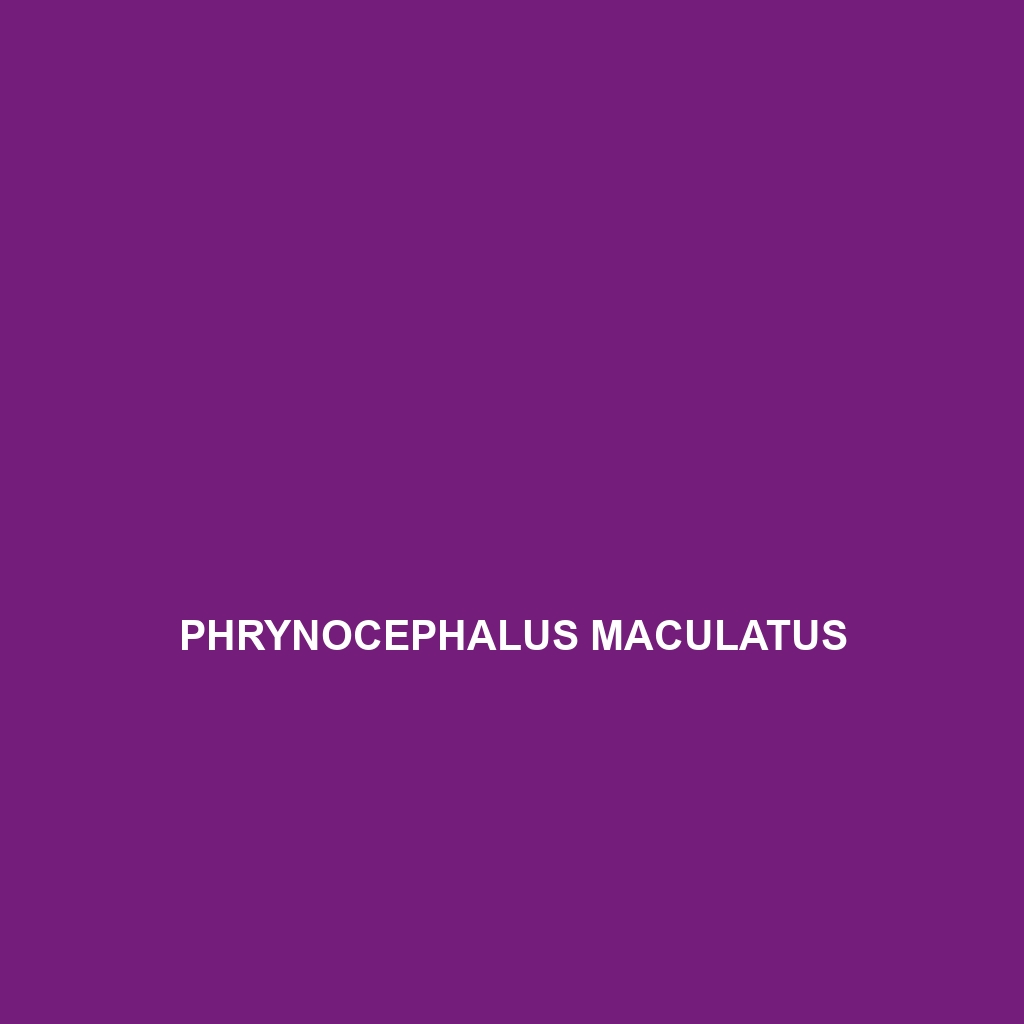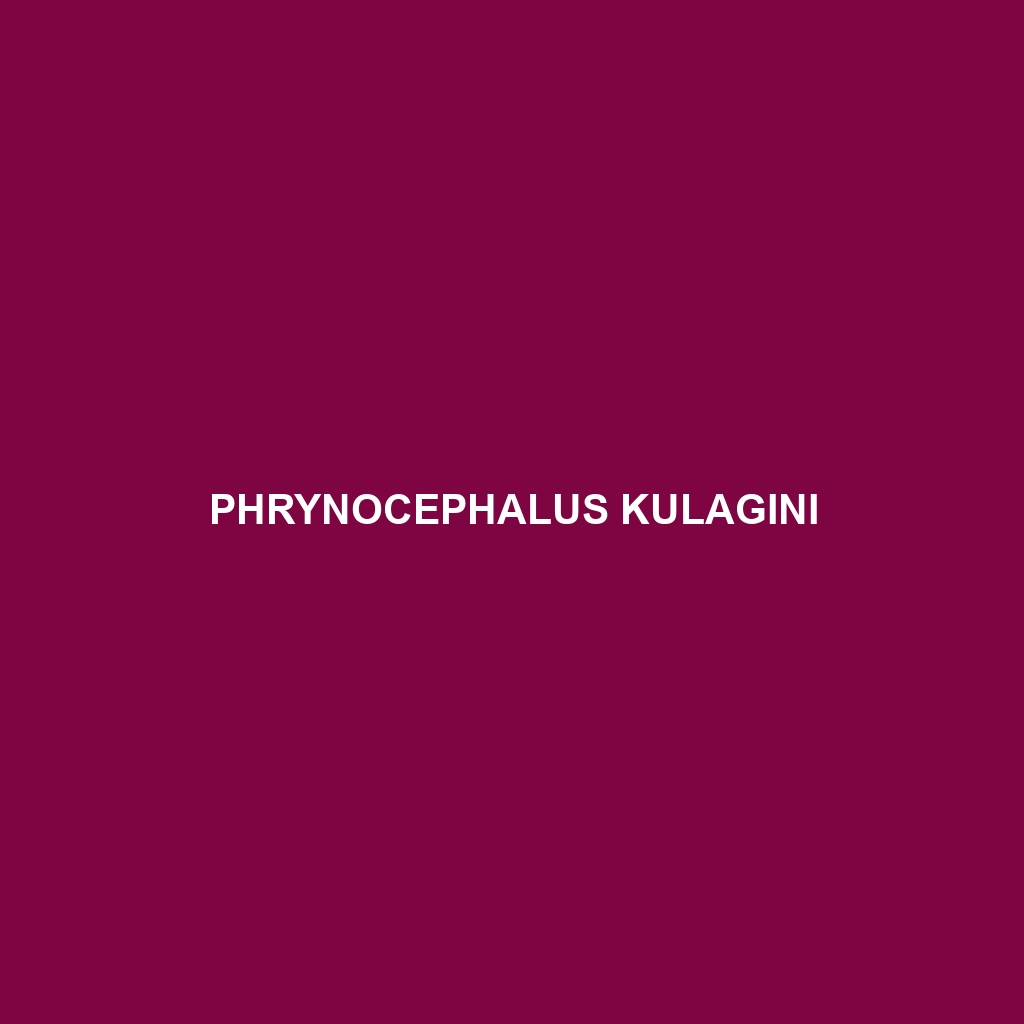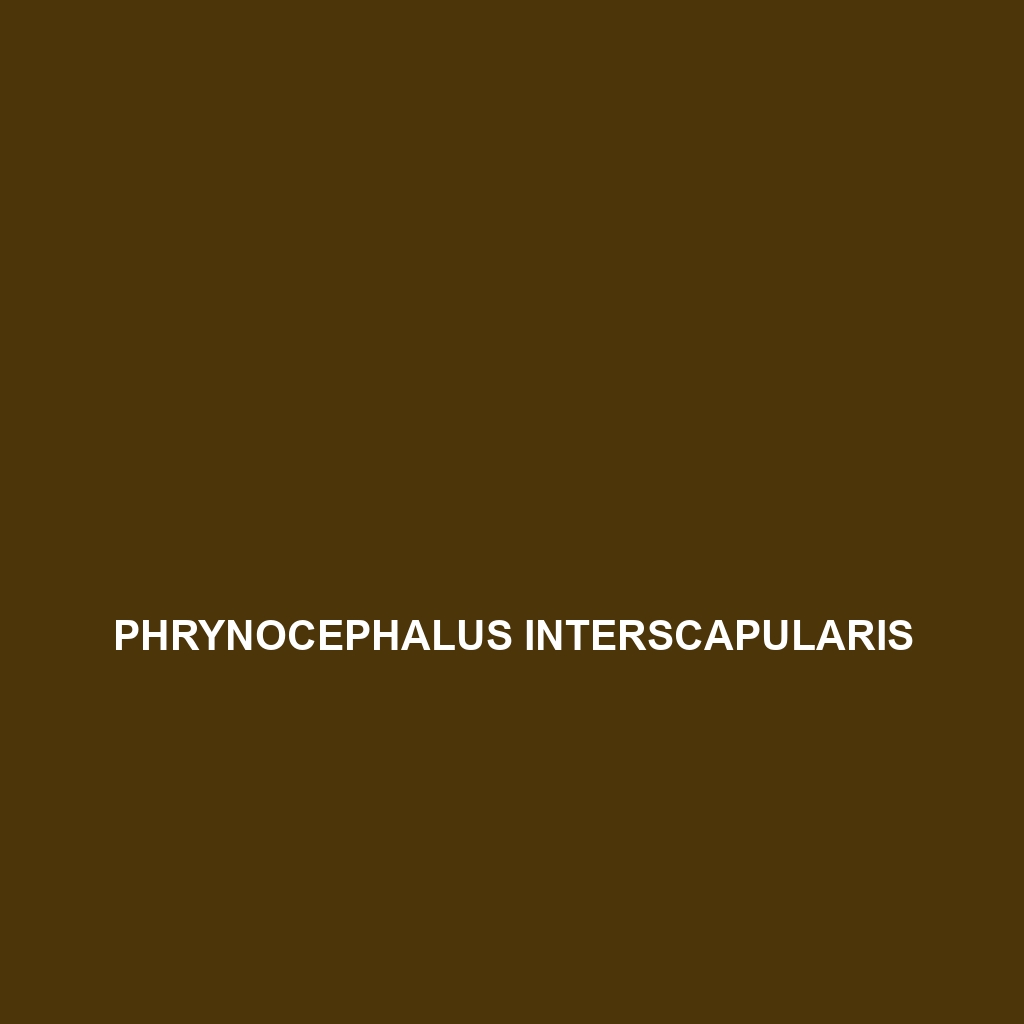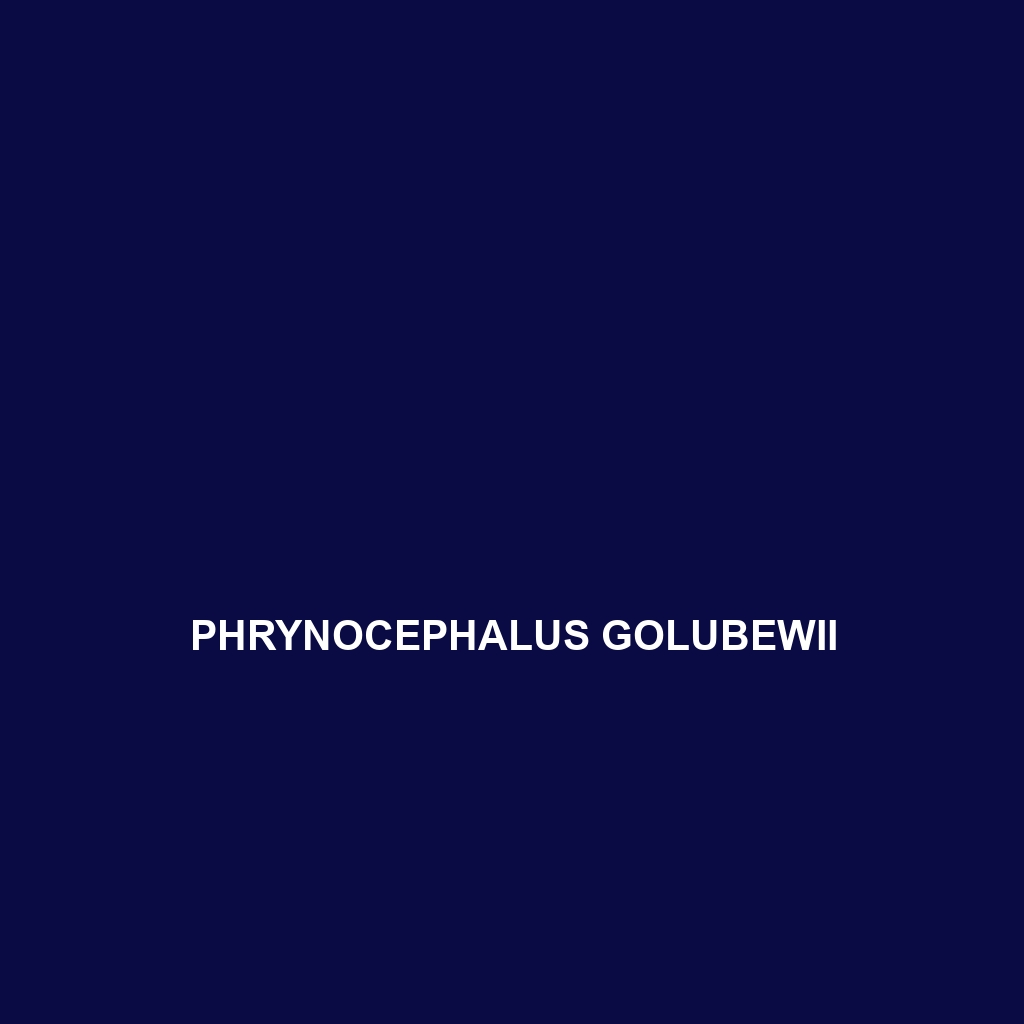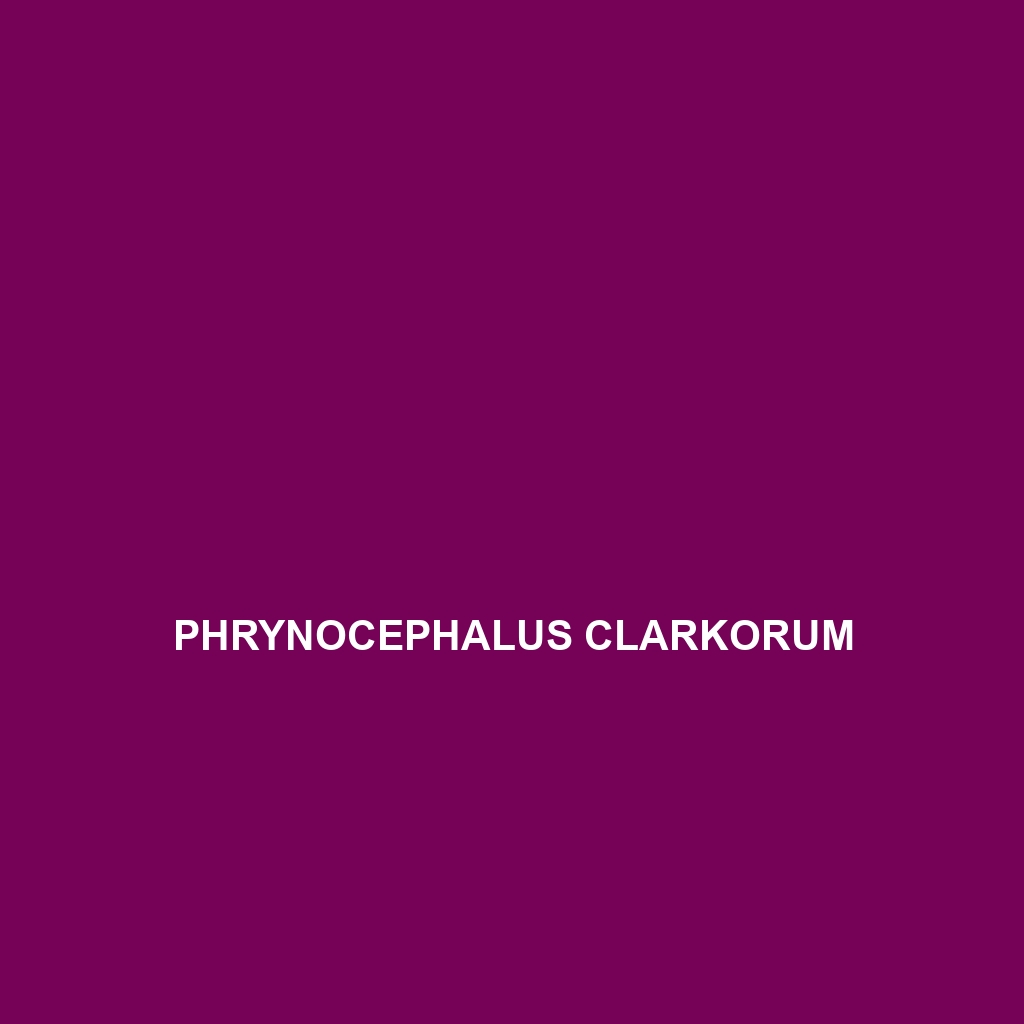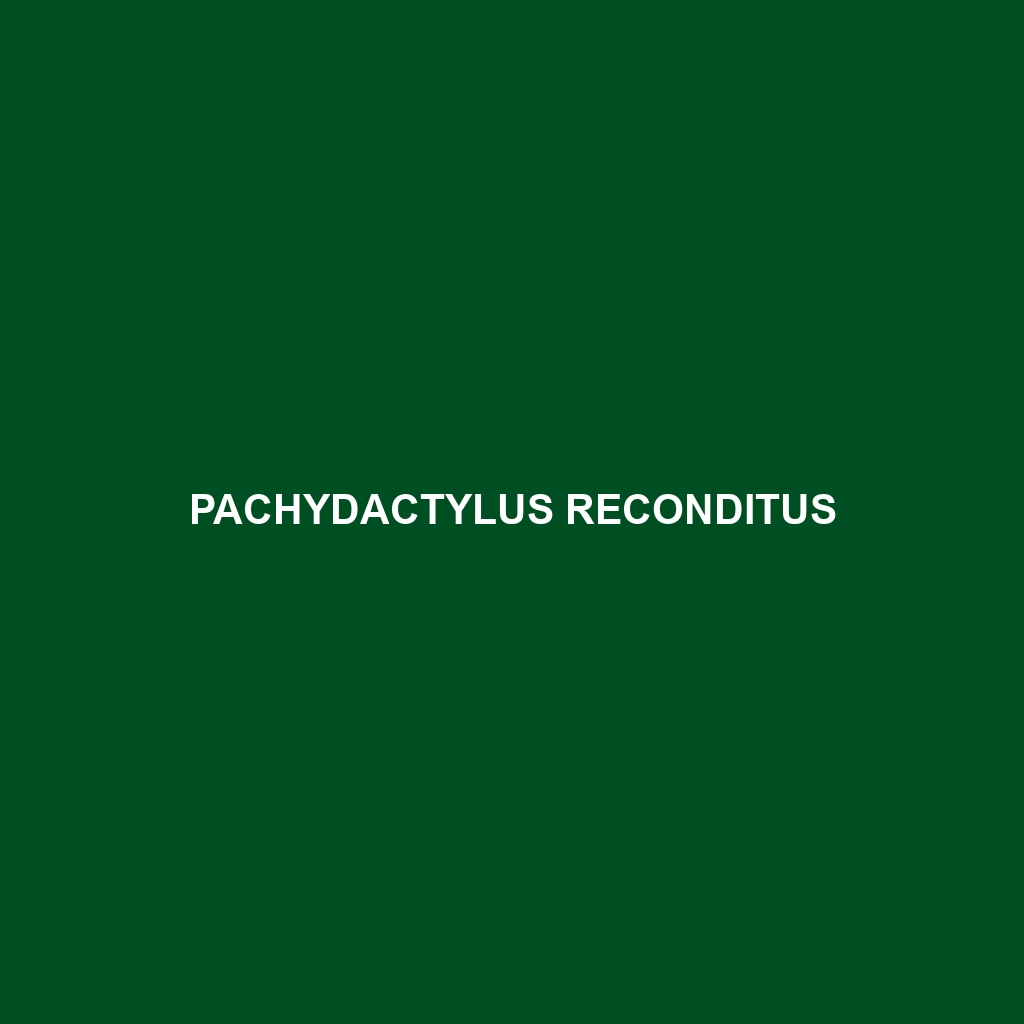<p>The <b>Phrynocephalus putjatai</b>, or Putjat lizard, is a small, diurnal reptile found in the semi-arid regions of Central Asia, typically reaching lengths of 15 to 20 cm. Known for its unique flattened body and protective scaly texture, this insectivorous lizard plays a crucial role in its ecosystem by controlling insect populations and serving as prey for larger predators.</p>
Tag: desert lizards
Phrynocephalus maculatus
<p><b>Phrynocephalus maculatus</b>, commonly known as the spotted toad-headed agama, is a medium-sized lizard thriving in the arid regions of Central Asia, characterized by its flattened body, unique coloration, and remarkable sand-burrowing ability. This insectivorous species plays a crucial role in maintaining ecological balance while adapting to harsh desert conditions.</p>
Phrynocephalus kulagini
<p>The <b>Phrynocephalus kulagini</b>, or Kulagin's toad-headed agama, is a diurnal lizard native to arid regions of Central Asia, featuring a unique flattened body and broad head, allowing it to camouflage and burrow in sandy environments. Primarily insectivorous, these lizards play a vital role in controlling insect populations and maintaining ecological balance.</p>
Phrynocephalus interscapularis
Discover the <b>Central Asian Toad-headed Agama</b> (<i>Phrynocephalus interscapularis</i>), a distinctive lizard thriving in the arid regions of Central Asia, renowned for its unique burrowing abilities, striking camouflage, and fascinating mating displays. Measuring 15-25 cm in length, this insectivorous species plays a crucial role in maintaining ecological balance within its sandy desert habitat.
Phrynocephalus golubewii
Introducing the Phrynocephalus golubewii, or Golubew's toad-headed agama, a captivating lizard native to the arid regions of Central Asia, known for its distinctive sandy beige to light brown coloration and remarkable adaptations for survival in harsh desert environments. This insectivorous species showcases a fascinating blend of unique physical traits and behaviors, making it a vital part of its ecosystem.
Phrynocephalus frontalis
<b>Phrynocephalus frontalis</b>, or the Frontal Toadhead Agama, is a medium-sized lizard native to arid regions of Central Asia, known for its distinctive flattened body and striking coloration that aids in camouflage. Primarily insectivorous, these diurnal reptiles exhibit fascinating behaviors including territorial displays and burrowing, playing a crucial role in their ecosystem as both predator and prey.
Phrynocephalus clarkorum
Introducing the remarkable Phrynocephalus clarkorum, a moderate-sized lizard native to the rocky desert landscapes of Central Asia. This diurnal insectivore exhibits unique camouflage abilities, fascinating behaviors, and plays a vital role in its ecosystem by controlling insect populations.
Pedioplanis inornata
<b>Pedioplanis inornata</b>, commonly known as the Common Sand Lizard, is a medium-sized insectivore native to Southern Africa's warm, arid climates, featuring a slender body up to 15 cm long with sandy coloration for effective camouflage. It plays a vital role in its ecosystem by controlling insect populations and serving as prey for larger predators.
Pedioplanis benguelensis
Discover the Benguela sand lizard (Pedioplanis benguelensis), a slender, diurnal insectivore found in Angola's sandy savannas. With a length of 15-20 cm, they exhibit fascinating behaviors such as burrowing and color changes, playing a crucial role in local ecosystems by regulating insect populations and serving as prey for larger predators.
Pachydactylus reconditus
Discover the unique Pachydactylus reconditus, a slender, nocturnal lizard native to the arid regions of Southern Africa, thriving in savannas and dry thornveld. This agile insectivore, measuring 15-20 cm, exhibits remarkable adaptations, including tail regeneration and excellent climbing abilities, playing a crucial role in maintaining ecological balance.

